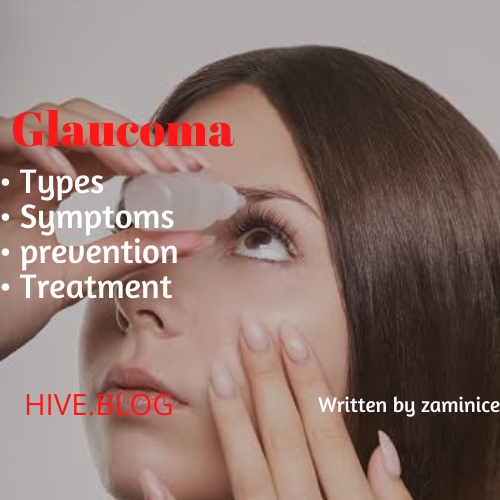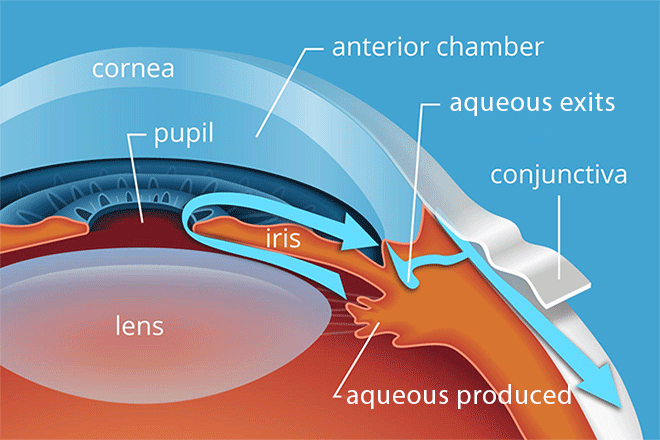
Image designed on canva
Greetings to everyone and a warm welcome to another day on the health series, its my pleasure. I've written interesting articles on some common health conditions like ulcerative colitis, yellow fever, conjunctivitis, etc. You can check them out on my blog
Today, I'll be writing about a serious eye disease, one that can lead to permanent vision loss if not diagnosed early and managed properly. This disease is known as glaucoma.
what is glaucoma
Glaucoma is an eye disorder characterised by severe eye pain, this is due to the build up of fluid in the eye, this invariably results in the damage of the optic nerve. The optic nerve is the organelle that sends image to the brain for interpretation. When this nerve becomes damaged, it leads to vision loss and subsequent blindness.
According to the world health organisation, glaucoma is the second leading cause of blindness globally, this is probably due to the fact that most people don't experience the symptoms or pain till later in their life when the optic nerve starts deteriorating. If the damage worsens without diagnoses and treatment, it may result in irreversible vision loss.
Causes of glaucoma
The eye constantly produce a transparent fluid called the aqueous humour, the work of this humour is to provide nutrition to the eye and keep it in stable state. The eye is structured in such a way that when new humour is produced, the old ones drains out through an angle known as the drainage angle, this process keeps the intraocular pressure of the eye stable.
Glaucoma onsets when the drainage angle of the eye is blocked, this leads to build up of fluid in the eye causing an increase in the intraocular pressure. Increase in intraocular pressure results in the damage of the optic nerve. The optic nerve consists of thousands of nerve fibres, each with the responsibility of sending image to the brain for interpretation, when a greater number of this fibres is damaged, vision loss ensued.
Risk factors
There are some risk factors associated with glaucoma, they include;
- People above 60years of age
- people with family history of the disease
- people with preexisting disease condition like diabetes.
- people with high blood pressure
- An injury or inflammation to the eye
- prolong intake of steroids like prednisolone
- African American, hispanic, Russians and the Irish people are all prone to the disease.
Types of glaucoma
There are about 4 different types of glaucoma,
They include;
Open angle glaucoma: This type of glaucoma happens gradually, and its the most common type of glaucoma globally. Its onset is due to the inability of the eye to drain fluid properly, hence resulting in build up of fluid. This type is usually painless at first. the symptoms only starts after some of the optic fibres have been damaged.
Close angle glaucoma: This type of glaucoma happens when the Iris of the eye blocks the drainage angle in the eye, this leads to rapid build up of fluid in the eye. It is usually a medical emergency which if not diagnosed and treated immediately, can cause irreversible vision loss.
Congenital glaucoma: this type of glaucoma is specifically experienced in newborns, this is due to defect of the drainage angle of the eye leading to build up of fluid and consequently resulting in glaucoma
Secondary glaucoma: This type of glaucoma occurs due to a preexisting condition like cataract or diabetes. This causes build up of fluid in the eye.
Symptoms
Most cases of glaucoma are usually asymptomatic at the initial stage, symptoms most times develop at the late stage of the disease when the optic fibres start getting damage.
Some of this symptoms include;
- vision loss
- redness of the eye
- severe eye pain
- nausea and vomiting
- eye disturbance
Treatment
The treatment option for glaucoma ranges from oral medication to iridotomy, depending on the stage and severity of the glaucoma.
For less severe glaucoma, oral medication like acetazolamide and eye drops like timolol can help in reducing the intraocular pressure. However, this should only be administered by an health expert.
Microsurgery like iridotomy and trabeculoplasty is also an option in very severe cases of the disease.
Conclusion
Glaucoma is a serious eye defect that shouldn't be joked with. Have yourself examined periodically by an opthalmologist if you have any family history of the disease or it risk the risk factors outlined earlier.
Early diagnoses is the key to saving one sight from the deleterious hands of glaucoma. Go for an eye check up anything you experience any discomfort in the eye.
Thanks for reading


